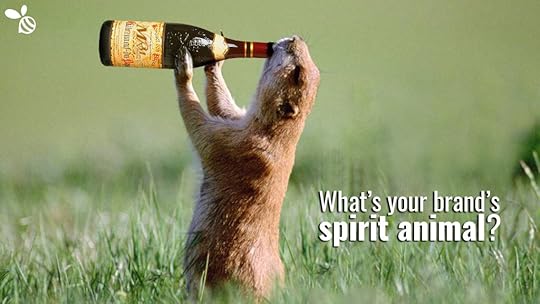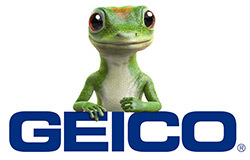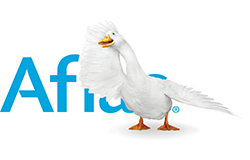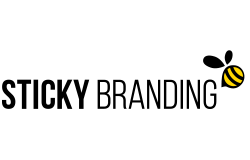Jeremy Miller's Blog, page 24
November 7, 2017
Strategies versus Tactics: Beware of Greeks Bearing Gifts

The “Trojan Horse” is a tale of strategy and deception.
The city of Troy was under siege for a decade. The Greek armies tried and tried to take the independent city, but they couldn’t break through the walls.
The Greek army, the most powerful of its time, waged attack after attack against the city of Troy. Think of the movie 300. The Spartans were the Greek warriors trying to break through these walls, and they were completely unsuccessful for 10 years.
Finally, after a decade of abject failure, the Greeks developed a strategy.
The Greeks constructed a huge wooden horse, and hid an elite squad of soldiers inside it. Meanwhile, the rest of the Greek army made a great display of breaking down their camps, and pretending to sail away.
The fleeing army left the giant wooden horse at the gates of the city of Troy as a “gift.”
The Trojans were initially skeptical of the outrageous gift. A priest named Laocoön argued the city should destroy the horse and famously said, “afraid of Greeks, even those bearing gifts.” After much debate, the Trojans pulled the wooden horse into the city as a trophy. They believed they had won the war by standing their ground, defending their walls, and holding the Greeks at bay for a decade.
As we already know, that was a devastating decision. That night the squad of soldiers inside the horse crept out of the structure and opened the city’s gates. The rest of the Greek army — the ones who pretended to sail away — were waiting to pounce.
An effective strategy is the most important aspect of winning. For a decade, the Greeks demonstrated that tactics without strategy have little effect. This lesson is equally relevant today. When you put tactics first you can get mired in a stalemate.
The problem is tactics are a lot easier to grasp than strategy. Your team may feel productive as they implement marketing campaigns and tactics, but struggle to justify their impact or return on investment. The tactics seem to be working, but who really knows.
Just look at the number of companies wallowing in social media tactics that have absolutely no effect on sales, customer satisfaction, or brand awareness.
Putting tactics first is never wise. Your competitors are too smart, and they are constantly looking for an advantage. Your brand strategy is how you rise above the day-to-day hustle so that you can determine which tactics to employ.
There are dozens of marketing tactics that you can use to grow your business. The challenge is to avoid the pull of “what to use” or “staying relevant with technology,” and formulate a strategy.
Start with the first question for defining a strategy, “What do you want?”
You're reading Strategies versus Tactics: Beware of Greeks Bearing Gifts by Jeremy Miller, originally posted on Sticky Branding. Did you enjoy this article? If so, sign-up for more of Jeremy's articles at Sticky Branding.
October 31, 2017
The Brand Map: 4 Elements of Brand Strategy

Growing a remarkable brand is a journey. It’s filled with obstacles and opportunities, but that’s the point. The steps you take to reach your destination will shape your brand.
To create a brand strategy, I use the metaphor of a ship sailing to a destination. The Brand Map demonstrates the 4 key elements of a brand strategy:
Vision
Outcomes
Values
Journey
Vision: Where is your company going?
A vision statement is the destination. It clearly and concisely communicates your company’s objectives.
Use this exercise to dream big and construct an ideal future.
Thinking in the present tense, imagine it is 5 years from today. What is your company doing? Who do you serve? What impact is it achieving? What has your company accomplished?
Describe your vision of the future in detail. Try to construct a bold yet realistic view of what your company has achieved.
Document your vision in a short statement that can be shared with anyone: employees, customers, and partners.
Outcomes: What do you want?
Outcomes are your goals, and they help to give your vision statement structure. By clearly defining the outcomes you can measure performance, and plot how you are making progress to arrive at the destination.
Using a defined timeframe — 1, 3, or 5 years — document up to 5 specific, measurable outcomes. An outcome can be a clear goal like market share or revenue, or an intended impact like helping to improve energy efficiency or employee engagement.
Avoid generating more than 5 outcomes. According to research by Booz and Co., as a company’s priority list grows, revenue growth declines
Values: What do you believe?
If you ignore your values, you risk crashing your brand.
Your company’s values are static. They don’t change, because they’re part of the DNA of your organization.
Values are powerful guidelines to help navigate your brand to its destination, and help you make decisions in a crisis.
Your values are more than trite words like integrity, respect, and excellence. An effective way to discover your values is consider what morals or beliefs you would adhere to in a crisis. These are guiding principles that direct you and your team how to act.
Journey: How will you reach the destination?
Your brand strategy is your plan to achieve your vision and outcomes. It forces you to consider how you will reach the destination without compromising your values.
Ask 3 questions to plot your Brand Strategy:
Where are you today, and where does your organization need to move towards?
What’s working, and what isn’t working?
Who here is part of the team moving forward, and who has stopped growing and cannot keep up?
If you have bold vision, you will be guaranteed to face challenges. It will stretch you and your team, and force growth. And it’s in the process of transformation to reach your destination that you grow your brand.
Your brand is based on what you’ve done, but branding is driven by what you will do. Plot your journey to transform your brand.
You're reading The Brand Map: 4 Elements of Brand Strategy by Jeremy Miller, originally posted on Sticky Branding. Did you enjoy this article? If so, sign-up for more of Jeremy's articles at Sticky Branding.
October 17, 2017
Working Alone, Together: Where to Draw Creative Energy?

There are two types of creatives:
Creative Introverts: People who work in seclusion, and are fueled by their own thoughts.
Creative Extroverts: People who gather energy from human interaction and collaborating with others.
I fall into the Creative Extrovert camp. I am at my best when mashing ideas with another fast-thinking, creative person. We bounce ideas back and forth, make connections, and push each other to see new possibilities.
What works best for me can drive an introvert nuts. A Creative Introvert can have all their mental and emotional creativity sapped with a freewheeling brainstorming session. The group expects each participant to throw out ideas, but the Creative Introvert needs time to digest and push ideas around on their own.
There is no plus or minus to each creative type. Everyone is creative, and everyone can contribute ideas. This is very positive, because networks will always outperform individuals in generating breakthrough ideas.
The challenge is how to organize teams to empower both Creative Introverts and Creative Extroverts to contribute equally.
Creativity Gets Typecast
People tend to perceive and foster creativity from their own style. Creative Extroverts gravitate towards brainstorming and group collaboration, while Creative Introverts seek out solitude and deep thinking.
A leader will typically organize his or her team to generate ideas based on how they create ideas. The leader isn’t being biased. Rather, they’re organizing people in a way that seems natural.
The problem with approaching creativity from your own style is it creates winners and losers. Not everyone can contribute equally when they are pushed out of their creative type.
In a team setting, effective ideation empowers both Creative Introverts and Creative Extroverts.
Working Alone, Together
At Sticky Branding, we engage Creative Introverts and Creative Extroverts equally in our projects. We describe the approach as “working alone, together.”
Working alone gives you time to research, write, find inspiration, and think about the problem. There’s no one looking over your shoulder, or asking you to have a flash of brilliance. You can just focus on the task at hand.
Working together, is the follow on step. We bring the group back together so the individuals can share their progress and the ideas that they are generating. This empowers the team to build upon each other’s ideas. They can group and push the concepts, and find ways to generate even more breakthroughs.
Working alone, together has two key benefits:
Avoid Creative Typecasting: The process plays to both creative types, and it empowers the team to bring out the best in each other.
Avoid Groupthink: Brainstorming sessions have a nasty habit of driving the group to consensus. By playing to the strengths of Creative Introverts and Creative Extroverts you avoid one idea dominating the others.
Create Space to Create
There are no rules to creativity. All you can do is push yourself to come up with cool ideas.
The challenge of creativity emerges in a team setting. The way you generate ideas is personal, and you can’t expect everyone else on your team to have your style.
The best leaders recognize the styles and approaches of both Creative Introverts and Creative Extroverts, and empower each to succeed. Working alone, together engages everyone to contribute fully in the creative process.
October 3, 2017
Harness the Creative Genius of Teams

Nobody knows your business better than you, but for some reason there’s a pull to look for ideas externally. Companies engage advertising agencies and management consultants, because they believe someone else has the answer.
The reality is different. You and your team have the power to solve complex problems by harnessing your creative genius.
Everyone Is Creative
Creativity gets stifled. A variety of factors from school to work to life all come together to convince people that they’re not creative. This notion is false.
Everyone is inherently creative. You may not express your creativity in art or design, but you have the power to generate ideas and solve problems. That’s creativity, and it’s yours to harness.
Teams Generate Better Ideas than Individuals
The lone genius is a powerful storyline. The founder, the creator, or the inventor has a breakthrough idea, and builds a company to exploit their genius.
But that doesn’t really happen.
Reid Hoffman, co-founder of LinkedIn explains, “While it’s true that some people are much better at idea generation than others, it’s always better to have a number of people working on ideas simultaneously. The best idea may come from person, number 89. And you can’t always predict where the good ideas will come from.”
Teams generate more breakthrough ideas, because they build upon ideas. It’s not just one idea that’s remarkable. It’s the process of molding, pushing, and adding to an idea that makes it transformative.
Guidelines to Generating More Ideas
Creativity is a muscle. The more you flex your creative muscles the stronger they get. But you have to start. Pick a challenge, and empower your team solve it.
Follow these 5 guidelines to get the best ideas from your team:
Clearly Define the Challenge. What is the problem and why does it matter to the organization? Ideas without context are hard to use.
Stay Focused. It’s easy to wander and explore tangents when brainstorming. Keep the objective clear, and stay focused on the task at hand.
Name Your Ideas. Ideas are fragile and easy to break. Give your ideas strength by naming them. A name makes it easier to work with an idea, and it empowers others to build upon them.
Keep Going. When ideas run dry, restate the problem and encourage more thinking. Often you discover breakthrough ideas in the second and third rounds of ideation.
Everyone Contributes. Some people may be more vocal and open with sharing, while others require prompting. Be sure everyone has a voice and contributes ideas.
With the right direction, teams can solve problems quickly and brilliantly.
Every organization has an immense reserve of untapped creative talent in its employees. The challenge is to harness and focus it.
What do you think?
Send us a note or a tweet. How do you harness the creative genius of teams?
September 26, 2017
Be Brilliant at the Basics

The best things in life are simple, authentic, and real.
Real food. Real craftsmanship. Real customer service. Real products. They all have a quality that trumps the latest fads and innovations, because they’re true to their essence.
Great brands share a similar quality. By being brilliant at the basics, companies are able to deliver better service and better customer experiences.
The Basics Go Unnoticed
Steve Jobs learned the value of craftsmanship from his father, Paul Jobs.
Steve Jobs explained, “I thought my dad’s sense of design was pretty good, because he knew how to build anything. If we needed a cabinet, he would build it. When he built our fence, he gave me a hammer so I could work with him.”
Fifty years after the fence was constructed, Jobs showed it to his biographer, Walter Isaacson. Touching the boards on the inside of the fence, he said, “[My father] loved doing things right. He even cared about the look of the parts you couldn’t see.”
He said that his father refused to use poor wood for the back of cabinets, or to build a fence that wasn’t constructed as well on the back side as it was the front. He continued, “For you to sleep well at night, the aesthetic, the quality, has to be carried all the way through.”
Craftsmen like Paul Jobs value all parts of their work. That attention to detail allows their work to stand the test of time.
It’s the work that goes on behind the scenes that makes a product or service great. The work may go unnoticed, but the truly great brands don’t cut corners.
The Basics Are Purposeful
The basics may not be glamorous or exciting, but they’re essential.
Great customer service starts with employees who care. All it takes to form an incredible customer experience is a curious employee who is willing to help. The employee may not have all the answers, but they can create lasting customer relationships if they’re fully present and willing to aid their clients to the best of their ability.
Delivering great customer service is deliberate. Nordstrom, Zappos, and USAA insurance wow customers by investing in their people, systems, and technology. It’s more than a talented employee on the front lines that wows customers. It’s the system.
A company’s honest commitment to serving customers is very hard to replicate, and it’s profitable. Customers will pay more for brands that are brilliant at the basics.
The Basics Build Brands
It’s the little things that customers remember and appreciate:
An employee who was friendly and served them well.
A product that was incredibly reliable and never requires maintenance.
A company that anticipates its customers’ needs with new products and features.
These simple yet highly functional experiences create a sticky factor. And the more you deliver these experiences, the more your customers will come back.
Your customers won’t need to look anywhere else when your company is brilliant at the basics.
The basics are the building blocks of your brand. It’s not sophisticated, but often the basics are the hardest part of business. So ask yourself and your team one question on a regular basis: how can we be just a little bit better?
September 19, 2017
Create and Hustle: Two Habits to Scale Your Personal Brand

There’s a not-so secret strategy to growing your personal brand, and it has just two habits:
Create
Hustle
There’s a whole industry wrapped around personal branding. You can learn how to optimize your LinkedIn profile, create a personal mission statement, learn how to grow your audience, and 10x your performance (whatever that means).
To be blunt, all these personal branding tactics are secondary. Unless you have mastered the Create/Hustle Cycle, they won’t deliver much value.
Take a moment and look at the authors, speakers, and leaders that you admire. For me, it’s people like Seth Godin, Tim Ferriss, and Dan Pink. They’re people that have worked deliberately to grow their brand and reputation by delivering immense value to a large audience.
The way they achieved their fame wasn’t by taking personal branding courses, or navel gazing about their “why.” They grew their brands by creating and promoting exceptional ideas.
That’s the strategy for personal branding:
Create: Package your ideas, expertise, and insights into products. This can be free content like a blog or podcast, premium content packaged in products or services, or a combination of both.
Hustle: Launch your ideas (content and products) and promote the heck out of them. Work to get your ideas to spread by sharing them with people that can value and use your expertise.
Create: Package Your Ideas to Spread
The first habit, Create, is the foundation of your brand, and it’s truly a habit.
In his biography, I Can’t Make This Up, Kevin Hart explains how he found his voice as a comedian. When he started out he created the persona, “Lil’ Kev the Bastard.” He was loud and silly, and used whatever gimmick he could to make people laugh.
Kevin Hart was funny, but he wasn’t original.
Hart’s mentor, Keith Robinson, taught him the power of being authentic. Robinson said, “Say something that matters, rather than stuff you think the crowd wants to hear, and you won’t go wrong.”
The advice stuck, and Hart made the difficult transition from telling jokes to connecting with his audience by sharing personal stories. This was a critical turning point in his career, because it forced Kevin Hart to become vulnerable and unique.
Kevin Hart didn’t start out as a master comedian. He spent years grinding away, creating jokes, and developing his skills. The cycle more than paid for itself, and today Kevin Hart is one of the highest paid comedians.
Creating rewards creating. Creating — whether it’s jokes, books, keynotes, products, blog posts, or Instagram updates — is a skill that requires honing. The more you create, the better you get. And this is the foundation of your brand.
The quality of your ideas and how they are packaged will define your brand. It’s the difference of being an amateur versus a professional.
Hustle: Relentlessly Promote Your Ideas
Hustle is the habit of promoting your content and making your ideas spread.
The best books don’t necessarily land on the New York Times Best Sellers List. The books you see on the lists have the best promotion. In fact, many NYT best selling authors have gamed the system, and bought their way onto the lists.
Marketing can be won with big budgets. This is a form of hustling. If you’ve got the resources, use them.
For the normals — up-and-comers or people who don’t have a couple hundred thousand dollars to launder book sales — we use more traditional means of promotion. We hustle by connecting with our audiences directly, and working deliberately to launch and promote our content.
I apply a simple guideline for hustling: every hour you invest in creating, spend two more in promotion.
How you choose to hustle is up to you, and what works best for your style:
Grow your following on social media.
Speak at industry events and conferences.
Implement Google Adword campaigns.
Network and connect with influencers.
Pick up the phone and start dialing.
It’s your job to promote your content and your ideas, and this is how you scale your brand. The more you promote your ideas, the more your reputation and network will grow.
Create/Hustle Is a Virtuous Cycle
The Create and Hustle habits are closely linked:
Creating new ideas and content gives you new products to market, sell, and promote.
Marketing your ideas gives you feedback and insights to develop your skills and generate more ideas.
The optimal structure is to be creating and launching new ideas constantly. It’s a process:
Create
Hustle
Repeat
The more you complete the process, the faster your brand will grow. It’s like a flywheel. The first few turns will feel slow and awkward. This is to be expected. You are developing the habits to create and hustle.
As you get a few launches under your belt, the process takes off:
Your audience grows faster.
Your influence expands.
Your ideas spread faster and further.
You make more money.
The strategy is simple in concept, but hard in execution: create, hustle, repeat. But this process is fundamentally how you grow a remarkable personal brand.
You don’t need to spend time and money on “personal branding courses.” Just get to work. Create and package your ideas, and work your butt off to get them to spread.
****
We’re here and always happy to chat. Feel free to Contact Us with any questions, comments or ideas.
September 12, 2017
How Names Make Ideas Spread

Names matter. A name has the power to shape an idea and make it spread.
Here is a dramatic example. For over a century astronomers and physicists studied a strange phenomenon in space that they called, “totally collapsed gravitational objects.”
Gravitational collapse is the contraction of a star due to the influence of its own gravity. As a star dies it draws matter inward toward its core.
In some instances, the collapse can be so intense that it forms a totally collapsed gravitational object. This object becomes a region of space where the gravitational effects are so strong that nothing, not even particles or electrons of light, can escape from inside it.
Totally collapsed gravitational objects attracted some of the greatest scientific minds. People like Albert Einstein, Robert Oppenheimer, and George Volkoff studied the phenomena, and they calculated how and why these objects formed.
It was a fascinating field of study, but only a select group of experts could talk about it. That is until American theoretical physicist, John Wheeler came up with a better name.
In 1967, John Wheeler transformed the field of study with a simple phrase, “black hole.” In two words he created a visual metaphor to describe a complex idea. The name released the concept from the labs of geniuses, and it travelled broadly. Wheeler made the field of study accessible to anyone.
This is the power of names. You give ideas gravitas, credibility, and the ability to spread when you can describe them simply and succinctly — when you give them a category-defining name.
Category-defining names have shaped several industries:
Sheetrock
Credit Score
Laser Tag
Inbound Marketing
These names create understanding. They make the idea, product, or service easy to talk about.
For example, a “cash back credit card” was previously called a “dividend card.” Dividend cards have been around for a long time, but they were a flop. Banks treated them as niche products, because they couldn’t sell them.
A few years ago, banks redefined the category with a new name, cash back credit cards. With a new name, the cards took off and are now one of the fastest growing financial services products. Consumers flock to these cards, because the value proposition is so clear and tangible: cash back.
Ideas spread and people act when they understand.
Changing the name created a dramatic result. No one, but a select few insiders, understood the value of a dividend card. For consumers it was like talking about totally collapsed gravitational objects. The name had to change to make it sellable.
Names have the power to change the world. They make complex ideas easy to communicate and share.
September 5, 2017
New ebook: Spark Engagement with Conversation Marketing

I’m excited to announce the release of newest ebook, Spark Engagement: Conversations Make Your Brand Sticky.
Spark Engagement shows you how to create Brand Storylines that build customer relationships and grow your brand.
About Spark Engagement
The five best words you can hear a customer say are, “That’s interesting. Tell me more.”
When you get a customer to say, “That’s interesting. Tell me more,” you’ve caught their attention. They’re listening and responding. They’re having a conversation. This is powerful, because conversations make your brand sticky.
Any company of any size can engage its market with conversations.
Conversations are powerful, simple, and sustainable. A great topic with an empowered team can spark a fire.
Spark Engagement is an ebook on how conversations make your brand sticky.
Download the Book. It’s Free!
Watch the Stories
Spark Engagement is based on my popular keynote talk and workshop of the same name. Here are a few clips from my talk at the Digital Marketing for Financial Services Summit.
Hack Your Autoresponders
Create a First Choice Advantage
How Wendy’s Sparks Engagement
August 29, 2017
Pick Up the Phone and Start Dialing

Most business problems can be resolved with one simple behavior: pick up the phone and start dialing.
Surprisingly, this is easier said than done.
Phone fear is a real thing, especially amongst millennials. According to research carried out by Ipsos Mori for Deloitte, 25% of millennials don’t use their smartphones to make calls.
Phone fear goes beyond millennials, and is well entrenched in the corporate world. People avoid the phone like it’s the plague. They’d rather text, email, tap out morse code, send smoke signals — whatever it takes to avoid picking up the phone.
Like all forms of communication, the written word has its limitations. Pick up the phone to solve problems.
Email Doesn’t Sell
Early on in my career my sales manager used to say, “The pen doesn’t sell.”
What he was really saying is “stop hiding behind email.” Email is an incredible communication device, but it doesn’t solve problems. The best way to sell is by talking with your customers.
When you speak with someone directly — whether on the phone, face-to-face, or even on a video chat — you cut through the clutter. You get to understand their needs, and you can work together to solve problems.
Email is a great follow on tool. Use it to reinforce what you said on the phone, and keep the process moving forward. But do the important work directly.
People solve problems when they speak to each other.
Make Calling a Habit
If you receive a customer complaint, pick up the phone.
If you want to do a survey or find out what your customers think, pick up the phone.
If you’re frustrated with someone on your team, pick up the phone.
If the situation is important, don’t waste time with emails and memos. Pick up the phone.
Make it a habit, and shift your behaviors from writing to calling. It may feel uncomfortable, but you will be far more satisfied with the outcomes.
Get Motivated to Call
In the Wolf of Wall Street, Jordan Belfort (played by Leonardo DiCaprio) rallies his team with an electrifying speech. He shouts,
So you listen to me and you listen well.
Are you behind on your credit card bills?
Good! Pick up the phone and start dialing!
Is your landlord ready to evict you?
Good! Pick up the phone and start dialing!
Does your girlfriend think you’re a f***ing worthless loser?
Good! Pick up the phone and start dialing!
I want you to deal with your problems by becoming rich!
“Pick up the phone and start dialing” isn’t just good advice for sleazy stock brokers pushing penny stocks. It’s good advice for anyone. Confront your problems head on: pick up the phone and talk to someone.
Jordan Belfort’s call to action motivates the heck out me, because the advice is so true.
Do you want to generate more sales?
Good. Pick up the phone and start dialing.
Do you want to improve customer service?
Good. Pick up the phone and start dialing.
Do you want to innovate and solve problems?
Good. Pick up the phone and starting dialing.
You’re not going to grow your business or solve problems hiding behind email. You need to talk with people, and the fastest way to get that started is to pick up the phone and start dialing.
Here’s a short clip of Jordan Belfort’s speech (Note. The language is quite profane).
August 22, 2017
Discover Your Brand’s Spirit Animal

Animals are powerful symbols to personify your brand and what it represents. If your brand was an animal, what kind of animal would it be?
Is your brand:
Analytical and thoughtful like an owl?
Independent, ambitious, and strong like a lion?
Intelligent and creative like an octopus?
Playful, generous, and optimistic like an otter?
Community focused like a honey bee?
There is no shortage of animals that could represent your brand, and discovering your brand’s spirit animal is a useful exercise to try.
Connecting your brand to an animal creates self-awareness. You get to explain why one animal better reflects your company and its values more so than any other animal.
Go Beyond the Obvious
You may not feature the animal in your logo or marketing collateral, but that doesn’t mean you shouldn’t discover your brand’s spirit animal. Increasing self-awareness is where you can gain brilliant insights into your brand:
Why you do what you do
What intrinsically motivates your team
Why are some customers are a better fit with your brand
What to look for when hiring new talent
The key to making this exercise work is getting specific.
For instance, many companies are drawn to dogs, which isn’t too surprising. “Dogs are man’s best friend.” If you happen to land on a dog, go deep. Which breed? Does your brand have endless energy but a misunderstood personality, like a pitbull or staffordshire terrier? Or is your brand smart like a collie?
The point of a self-awareness exercise is to go as deep as you can. When you understand your brand’s inner motivations and traits you can pull that out into your marketing.
Showcase Your Animal
Don’t shy away from your brand’s spirit animal. It can become a brand symbol or even a brand mascot.
Think of the Alfac duck or the GEICO gecko. Each insurance company uses animals as brand mascots. These mascots are the face of the brand, and clearly differentiate each company.


Animals take a company from being faceless and cold to giving it a voice with personality. The gecko helps to position GEICO as a servant brand that is accessible to anyone.
The gecko is portrayed as a neighbor offering a friendly tip when buying car insurance, “Fifteen minutes could save you fifteen percent or more on car insurance.”
I too use animals in the development of my brands.
In my family business, we used a frog in our logo and brand mascot. Choosing a frog was easy for this brand, because the name LEAPJob is a play on the phrase “leap frog.”


That said, we did a lot of research and self-discovery to create a frog that was unique to our brand. Our guidelines stated the frog always had to be in motion, youthful and energetic, and be a derivative of the red-eyed tree frog.
In Sticky Branding I use a bee.

Finding the animal representation of Sticky Branding was a little tougher. We were looking for a symbol of attraction and connection, but we didn’t want to use images of glue or honey. Being stuck isn’t the point.
Sticky Branding is about attraction and connection. It’s about drawing in customers, building relationships, and creating a first choice advantage. This led us to the idea of bees attracting bears to honey, and how bees create highly organized communities. The bee stuck.
What Is Your Brand’s Spirit Animal?
What animal best represents your brand?
This is a simple and fun exercise. Start with a broad question, “What animal best represents our brand and why?” Then go deeper. Continually ask why. Compare your options, and consider other animals. Push yourself and your team beyond the obvious, and get to the real truths of your brand.
The reward of discovering your brand’s spirit animal is self-awareness. When you know what your brand truly represents and why, you can create brilliant marketing that brings those truths to life.
*****
I’d love to hear from you. Share your brand’s animal with me on Twitter or LinkedIn. And as always, I am here and happy to chat. Send me a note.



